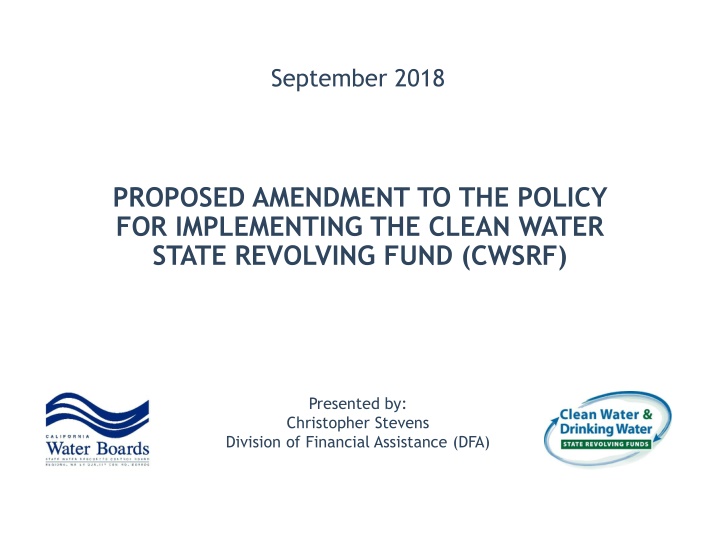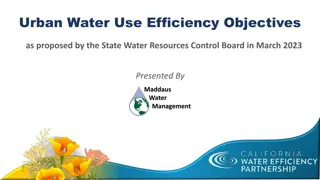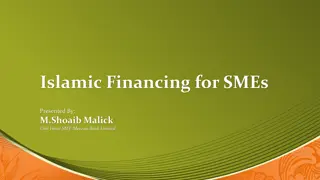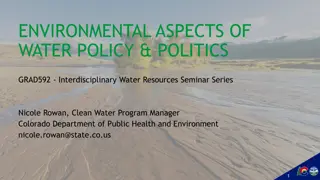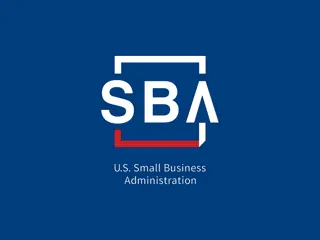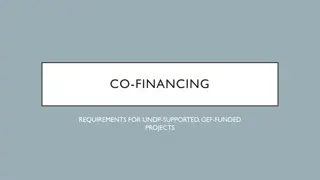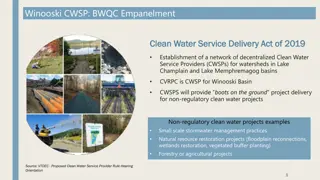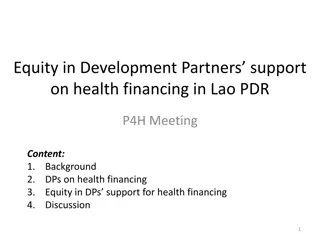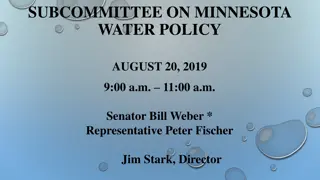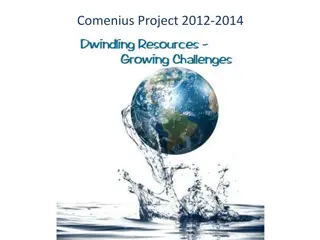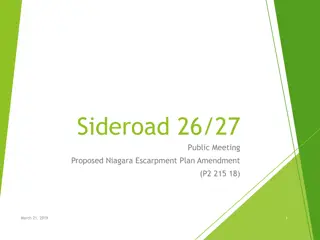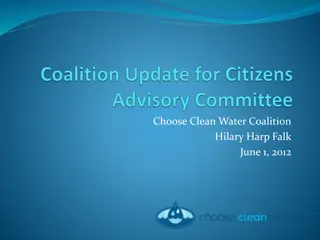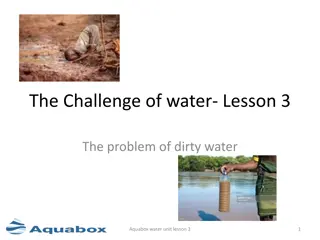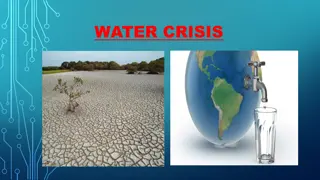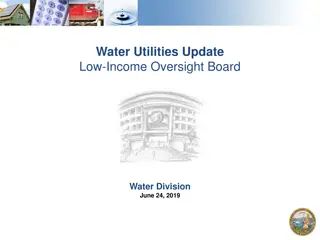September 2018 Proposed Amendment to CWSRF Policy for Clean Water Financing
Presented by Christopher Stevens from DFA, this proposed amendment aims to provide additional flexibility and clarity in implementing the Clean Water State Revolving Fund (CWSRF). The amendment covers prioritizing applications, sustainable financing, and a detailed scoring system for project evaluation.
Download Presentation

Please find below an Image/Link to download the presentation.
The content on the website is provided AS IS for your information and personal use only. It may not be sold, licensed, or shared on other websites without obtaining consent from the author.If you encounter any issues during the download, it is possible that the publisher has removed the file from their server.
You are allowed to download the files provided on this website for personal or commercial use, subject to the condition that they are used lawfully. All files are the property of their respective owners.
The content on the website is provided AS IS for your information and personal use only. It may not be sold, licensed, or shared on other websites without obtaining consent from the author.
E N D
Presentation Transcript
September 2018 PROPOSED AMENDMENT TO THE POLICY FOR IMPLEMENTING THE CLEAN WATER STATE REVOLVING FUND (CWSRF) Presented by: Christopher Stevens Division of Financial Assistance (DFA)
Background Policy covers CWSRF and complementary financing Last Amended on February 17, 2015 Historical Average: 2 3 years Demand on the CWSRF has greatly increased >$8 billion 1
Prioritize applications Maintain sustainable finances Additional flexibility to deal with wide range of borrower credits Drivers Consistency between CWSRF and DWSRF Policies Additional Clarity 2
Fundable List Only projects on Fundable List will be eligible for financing Small SDAC, Small DAC, and Public Health Projects automatically Fundable; not subject to scoring All other applications will be ranked by Priority Score All applications will be scored complete & incomplete 3
90% 125% of sustainable funding level ~ $ 1.0 billion/year Execute agreements for all Fundable applications by end of fiscal year Fundable List Applications roll over if not funded 4
Applicants review worksheets DFA completes scoring worksheet for each Project Draft IUP; management approval; brief Board members Scores compiled and analyzed Process Public Review Address comments IUP adopted by Board 5
Scoring System Priority Score will be the sum of three components: 1. Primary Score, 2. Secondary Score, and 3. Readiness Score Maximum Priority Score = 16 6
1. Primary Score Purpose Resource Corrective Preventive Improvement Drinking Water Source 9 8 7 Delta Water Quality 8 7 7 Water Recycling -- -- 7 Impaired Water Body 8 6 4 Water Quality Control Plan or Permit 8 6 4 All applications receive a Primary Score One number is selected from the table Applications that do not fit into any category will receive a Primary Score of 2 7
2. Secondary Score May receive Secondary Score One number is selected from the table If no criteria are met, Secondary Score = 0 8
3. Readiness Score Application or Design Status Score Complete Application Received by the Division 2 Plans and Specifications as verified by Division If > 49% = 1, or if > 89% = 2 staff All applications receive Readiness Score Add the two parts together If application incomplete, Application Readiness = 0 If P&S < 50 %, Construction Readiness = 0 NOTE: Fundable applications that had an incomplete application and P & S < 49% may be subject to deadlines for submitting the complete application and substantial P & S to remain on the Fundable List. 9
Priority Score Calculation Example: Critical Improvements at a WWTP Primary Score: Verify the purpose of the project and the resource or impact associated with the project Primary Score = 6 Project would preventfuture water quality permit violations Secondary Score: Verify which secondary characteristic best describes the project The applicant has adopted a detailed Climate Change Action Plan; the Project would help implement the plan s objectives Secondary Score = 3 Readiness Score: Verify the status of the application and Plans & Specifications Application Status: 100 % complete; Application Readiness = 2 P & S Status: 100% Complete; Construction Readiness = 2 Readiness Score = 4 Priority Score = Primary Score + Secondary Score + Readiness Score Priority Score = 13 10
Developing the Fundable List Iterative Process After applicants review scores, all scores will be compiled and sorted highest to lowest Applications with the same score either Fundable or not Fundable Pick a cutoff score: If total $ < 90% of funding target, pick a lower score If total $ > 90% and < 125%, then If total $ > 125%, then modify scores = or > proposed cutoff score 11
Scoring Modifications 2 Potential modifications If Draft Fundable List > 125% of target, then add points for community status Only to those = or > proposed cutoff score If still > 125%, then partial financing is applied 100% funding to greatest extent Partial funding applied uniformly 12
Credit Review Allow Deputy Director discretion in cases where applicants have existing debt programs and are highly rated Can accept existing definitions and covenants New Credit Review appendix (Appendix N) Allows Deputy Director to update process consistent with Policy requirements Debt Service Coverage Increased senior and parity coverage from 1.1 to 1.2 times Lowered subordinate coverage to 1.0 times 13
Other Changes 1. Eligible Start Date Redefining term to allow construction costs to be eligible starting with Notice to Proceed 2. Planning/Design Loans Changing from refinance to restructure to match DWSRF Policy Also, Planning/Design Loan Application is subject to scoring and must be on Fundable List 14
Other Changes (cont.) 3. Align Water Conservation and Management with current State Law Water Suppliers must certify meeting Division 6 of Water Code Non-Water Suppliers must certify that area water suppliers meet Division 6 4. Dropping Pledged Revenues Fund Resolution, but must submit a closing resolution consistent with Gov. Code 5852.1 15
Other Changes (cont.) 5. Appraisal requirement dropped for purchase of land or easements, but will be required if land is used as security 6. Policy generalized to apply to all types of project (i.e., Project Financing) No longer using term Expanded Use Projects 7. Pre-Payments require consent 16
Pros Better manage demand on CWSRF Program Maintain strong finances Allow applicants to self-score and self- select applications Credit Reviews Improve clarity and transparency of financial review process Improve consistency between CWSRF and DWSRF 17
Cons New scoring system will require adaptation from applicants and DFA staff Scoring system may produce unpredictable results Adjustments or improvements may be needed 18
Schedule Task Date(s) Remarks Begin Comment Review Period 9/14/2018 Draft Policy posted on the web Central Valley Regional Water Quality Control Board 9/18/2018 Stakeholder Workshops 9/21/2018 East Bay Municipal Utility District 9/25/2018 Irvine Ranch Water District End Comment Review Period (Revised Date) Board considers Policy amendment (Revised Date) 10/19/2018 At noon 11/27/2018 Regular Board meeting Based on applications as of 12/31/2018 Scoring January 2019 Draft SFY 2019-2020 Intended Use Plan posted on the web Adoption of SFY 2019-2020 Intended Use Plan Early April 2019 June 2019 19
Questions 20
